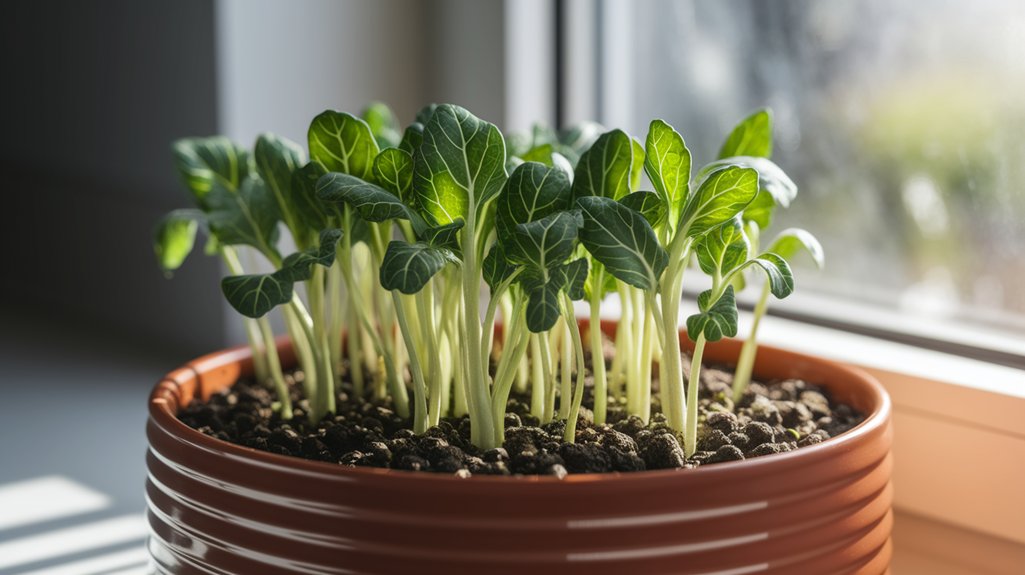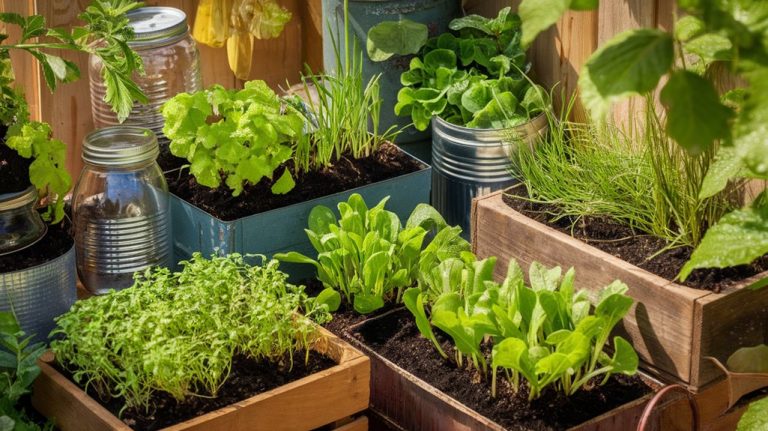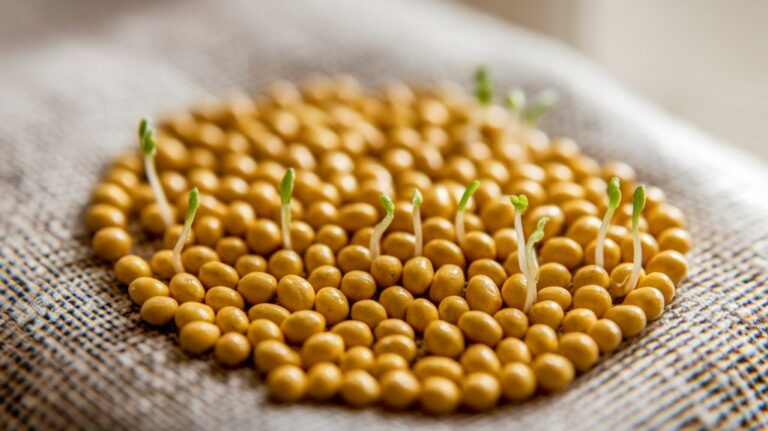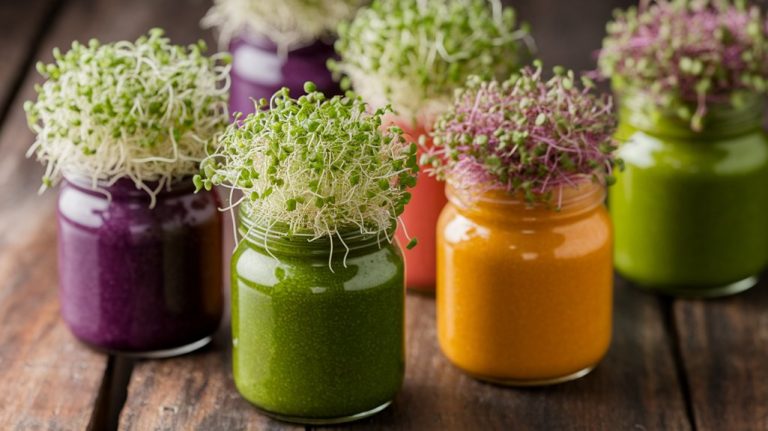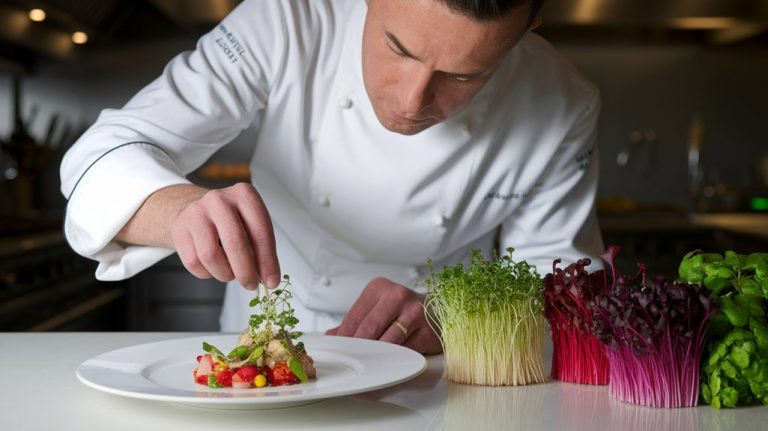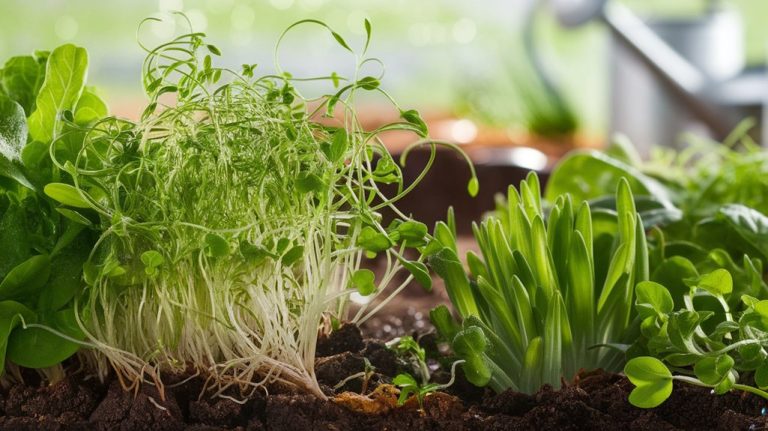How to Sprout Rapini Raab Broccoli
To sprout rapini raab broccoli, I start by selecting organic seeds labeled specifically as rapini. Then, I prepare well-draining soil with a pH between 6.0 and 7.0, enriched with compost. I plant seeds about ¼ inch deep in rows spaced 18 inches apart and ensure they receive at least six hours of sunlight daily. I keep the soil consistently moist, using balanced fertilizer as needed. For optimal growth, I monitor for pests and provide care throughout their development. There’s much more to consider for a thriving crop.
Key Takeaways
- Soak rapini seeds in water for 24 hours to enhance germination rates before planting.
- Plant seeds in well-draining soil with a pH of 6.0 to 7.0, ensuring ample sunlight.
- Space seeds about 18 inches apart to allow for proper growth and air circulation.
- Keep the soil consistently moist, avoiding saturation, to promote healthy sprouting.
- Monitor for pests and diseases, ensuring optimal conditions for seedling development.
Understanding Rapini Raab Broccoli
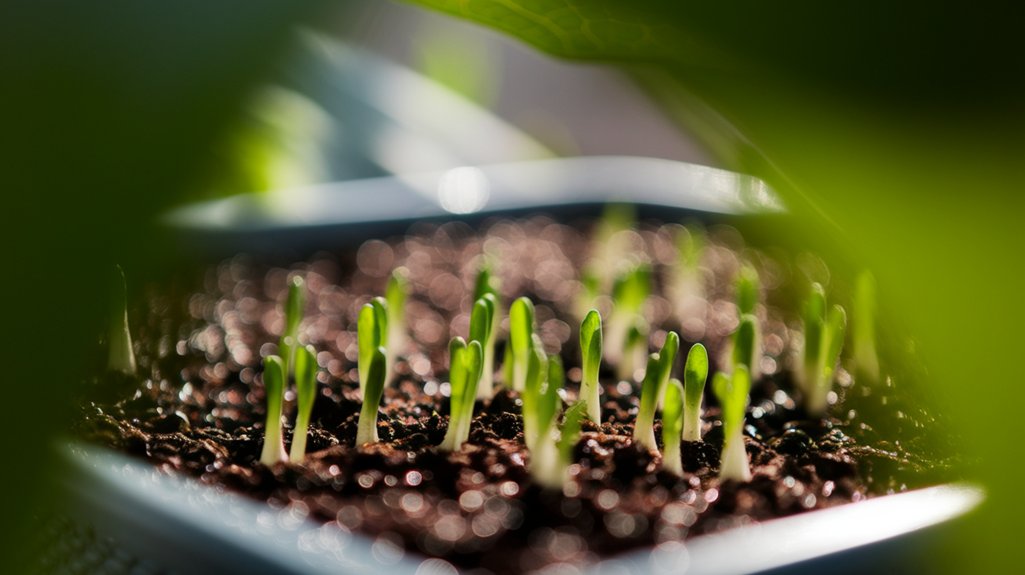
Rapini, often referred to as broccoli rabe, is a leafy green vegetable that belongs to the Brassica family, similar to its more well-known cousin, broccoli.
This plant is characterized by its long stems and small, broccoli-like florets, which are often accompanied by deeply serrated leaves. I appreciate rapini‘s slightly bitter flavor, which contrasts beautifully with its earthy undertones.
Nutritionally, it’s rich in vitamins A, C, and K, along with essential minerals like calcium and iron.
When I choose to grow rapini, I’m drawn to its ability to thrive in cooler temperatures, making it a perfect option for early spring or late fall planting.
Understanding these factors helps me cultivate a productive and flavorful harvest.
Choosing the Right Seeds
When it comes to growing rapini, selecting the right seeds plays a significant role in ensuring a successful harvest.
I recommend looking for varieties specifically labeled as “rapini” or “broccoli raab.” These types are bred for their tender shoots and leaves, which are the primary edible parts.
It’s essential to check the seed packet for information on days to maturity, as some varieties mature faster than others, allowing for staggered harvests.
I also prefer organic seeds to avoid synthetic pesticides and fertilizers.
Additionally, consider your local climate; some varieties thrive in cooler conditions, while others can withstand heat.
Preparing Your Growing Space
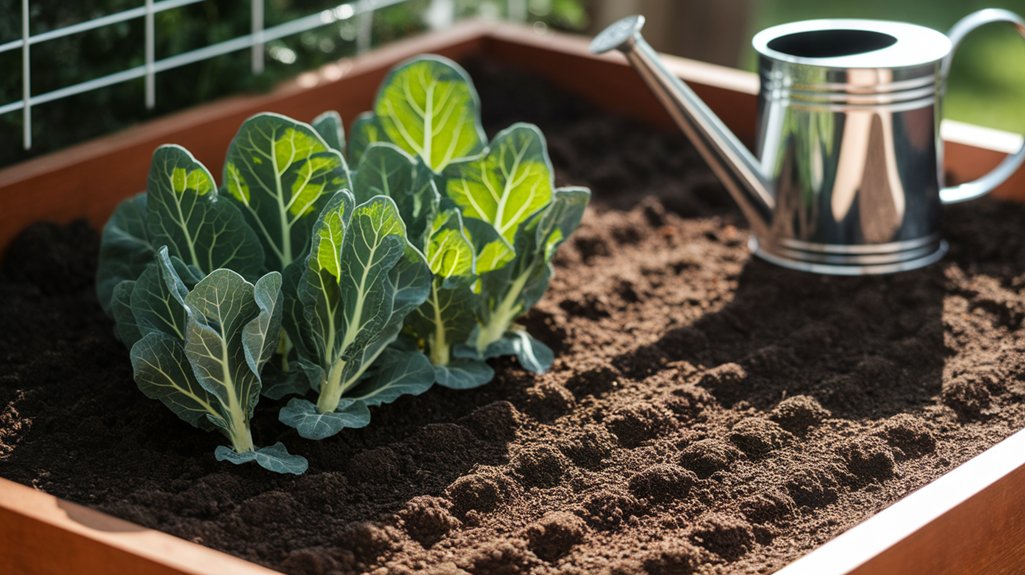
Before I can sow my rapini seeds, I need to ensure my growing space is properly prepared. First, I choose a location that receives at least six hours of sunlight daily.
Next, I clear the area of weeds and debris, as this prevents competition for nutrients. I then test the soil pH; rapini thrives in slightly acidic to neutral soils (pH 6.0-7.0).
If necessary, I amend the soil with organic compost to improve fertility and drainage. Tilling the soil to a depth of about 12 inches helps aerate it, promoting root growth.
Lastly, I establish rows spaced about 18 inches apart to allow for proper air circulation and growth. This meticulous preparation sets the stage for healthy rapini development.
Planting and Caring for Your Seeds
When I plant rapini raab broccoli seeds, I focus on creating ideal conditions for growth, including soil temperature and light exposure.
I also ensure that I properly manage watering and nutrient levels to support robust development.
Additionally, I stay vigilant about pest and disease threats to protect my plants throughout their growth cycle.
Ideal Planting Conditions
To achieve optimal growth for your rapini raab broccoli, understanding the ideal planting conditions is crucial. I’ve found that specific factors influence seed germination and plant health significantly. Here’s a quick reference table to guide you:
| Factor | Ideal Condition | Notes |
|---|---|---|
| Temperature | 60°F to 70°F (15°C to 21°C) | Seeds germinate best at this range. |
| Soil Type | Well-draining, loamy | A pH of 6.0 to 7.0 is preferred. |
| Sunlight | Full sun (6-8 hours/day) | Essential for strong growth. |
| Spacing | 12-18 inches apart | Allows for air circulation. |
Watering and Nutrient Needs
While ensuring your rapini raab broccoli receives adequate water and nutrients, I’ve found that maintaining a balanced approach is essential for optimal growth.
It’s important to keep the soil consistently moist but not soggy. I water deeply, allowing the roots to establish well. I also focus on providing the right nutrients to support healthy development.
- I use a balanced fertilizer, applying it every few weeks during the growing season.
- I monitor the soil pH, targeting a range of 6.0 to 7.0 for best results.
- I pay attention to signs of nutrient deficiency, like yellowing leaves, adjusting my care as needed.
This careful attention ensures my rapini raab thrives and produces a bountiful harvest.
Pest and Disease Management
After ensuring my rapini raab broccoli gets the right water and nutrients, I turn my attention to pest and disease management.
I regularly inspect the plants for common pests like aphids and cabbage worms. When I spot them, I use insecticidal soap or neem oil, applying it in the early morning to avoid harming beneficial insects.
I also rotate my crops annually to prevent soil-borne diseases like downy mildew and black rot. Maintaining good air circulation and avoiding overhead watering helps reduce humidity, minimizing fungal issues.
If I notice any diseased leaves, I promptly remove and dispose of them. Keeping a vigilant eye on my plants ensures I catch problems early, promoting healthy growth and a bountiful harvest.
Harvesting Your Rapini Raab Broccoli
As I prepare to harvest my rapini raab broccoli, I focus on the right timing to ensure the best flavor and tenderness. Typically, I aim to pick the shoots when they’re around 4 to 6 inches tall and before the flowers fully open. This window ensures the ideal balance between vibrant taste and crisp texture.
Here are a few key points I keep in mind during harvesting:
- Use sharp shears or a knife to cut the stems cleanly, preventing damage to the plant.
- Harvest in the morning when the temperatures are cooler; this helps maintain freshness.
- Regularly check for new shoots, as rapini keeps producing after the initial harvest, extending my crop yield.
With these tips, I maximize my harvest!
Culinary Uses and Nutritional Benefits
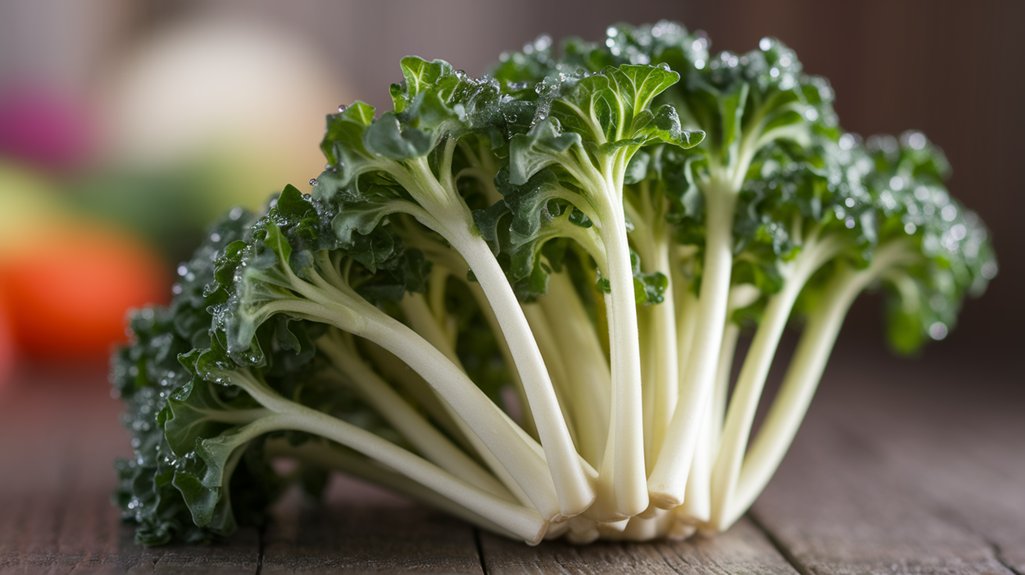
Rapini raab broccoli offers a unique blend of culinary versatility and impressive nutritional benefits, making it a standout choice in my kitchen. I love sautéing it with garlic and olive oil for a simple side dish or adding it to stir-fries for an extra crunch. Nutritionally, it’s rich in vitamins A, C, and K, along with essential minerals. Below is a concise breakdown of its key benefits:
| Nutrient | Amount per 100g | Health Benefit |
|---|---|---|
| Vitamin A | 700 IU | Supports vision and immunity |
| Vitamin C | 90 mg | Antioxidant, boosts collagen |
| Vitamin K | 400 mcg | Aids in blood clotting |
| Calcium | 100 mg | Essential for bone health |
Incorporating rapini into meals not only enhances flavor but also contributes to my overall health.
Frequently Asked Questions
Conclusion
In conclusion, sprouting rapini raab broccoli is a rewarding endeavor that yields both delicious and nutritious greens. By selecting the right seeds, preparing your growing space, and following proper planting and care techniques, you can enjoy a bountiful harvest. I encourage you to explore its culinary uses and appreciate the health benefits this versatile vegetable offers. With a bit of attention and patience, you’ll have fresh rapini raab broccoli to enhance your meals in no time.

